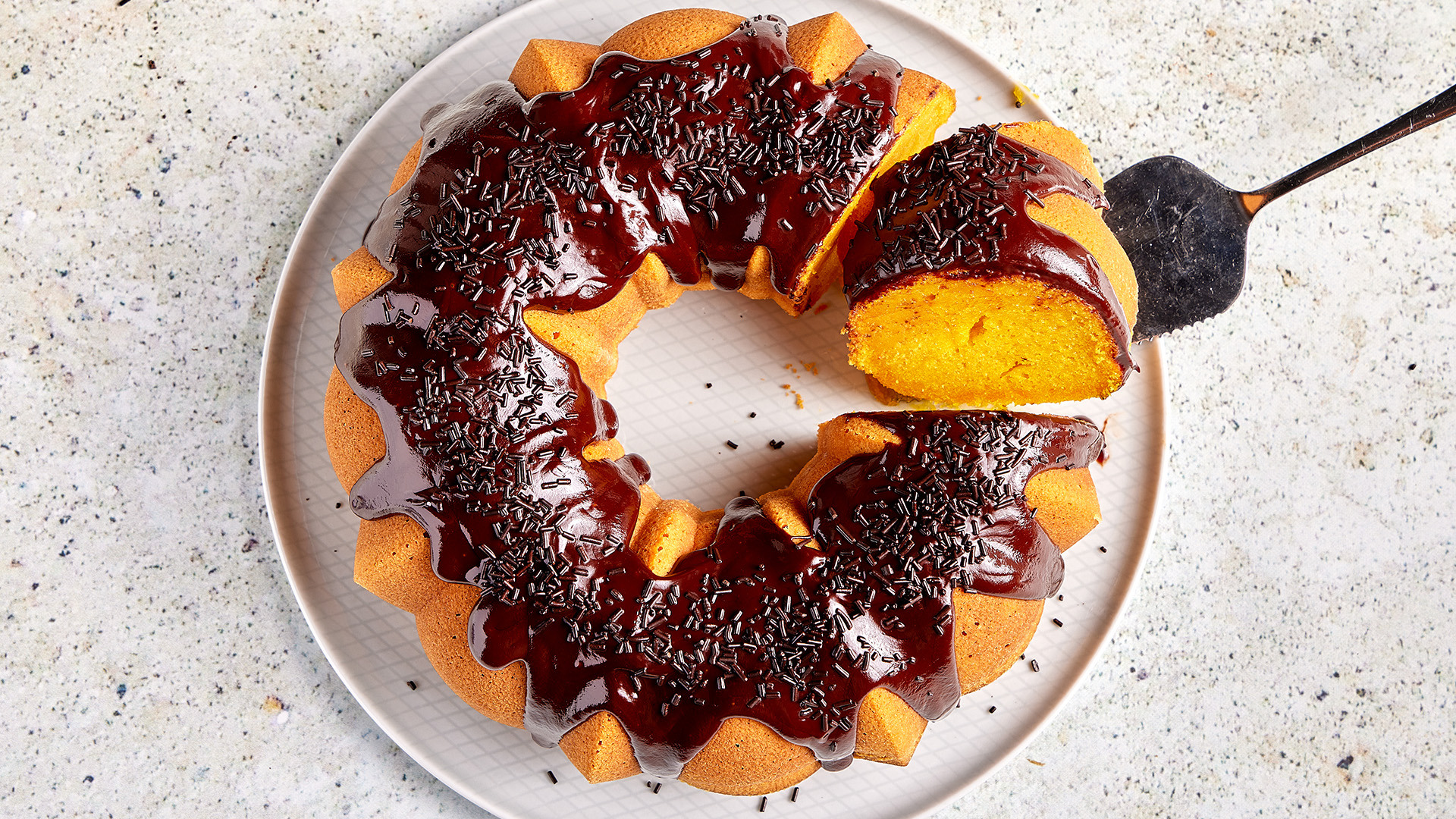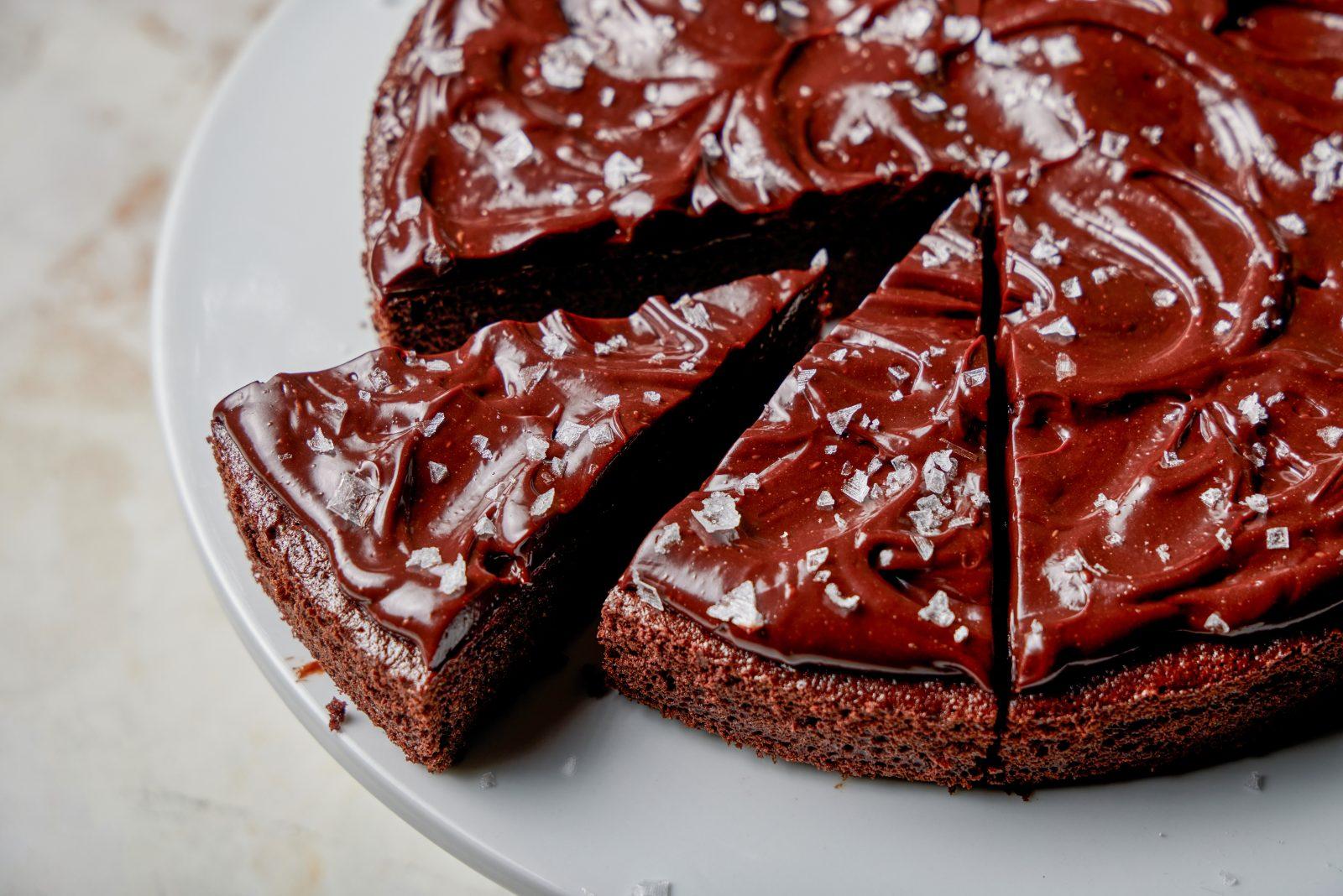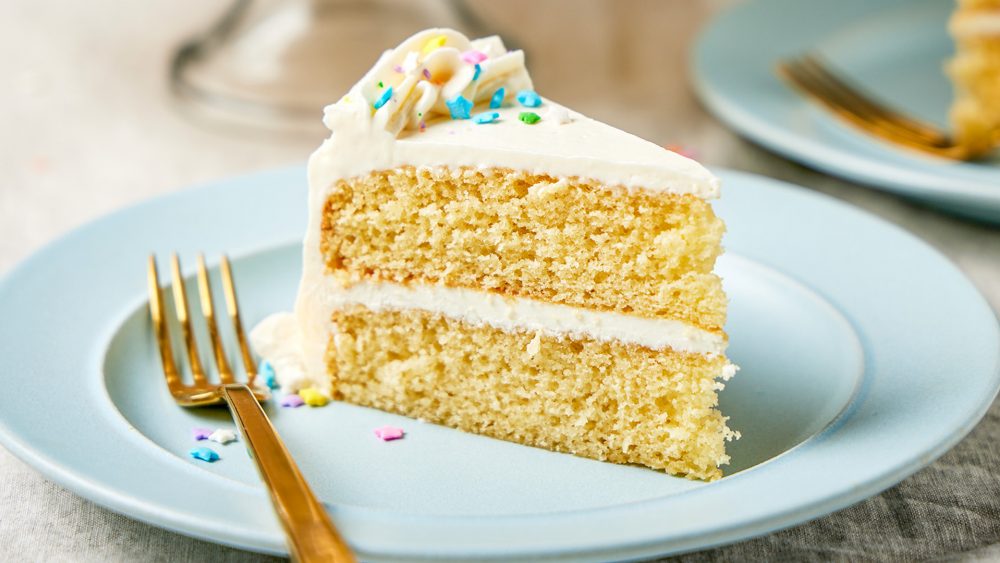But it’s not as easy as tossing all of your ingredients into a blender and letting it whirr. To understand what makes a good blender cake, and how to make it, we have to start with a tiny bit of science.
Blending lets you skip the butter creaming and finicky egg additions
Creaming butter and sugar is the first step in most cookie and cake recipes, and it’s something I dread, mainly because I have a difficult time clocking when the mixture has turned “light and fluffy.” It’s not something you can skip, however. Bashing the fat and sugar together against the side of a mixing bowl ensures the sugar is evenly distributed, but it also introduces air, adding volume to your batter with “mechanical leavening.” Most of the time, this is done with a stand mixer, hand mixer, or heavy wooden spoon.
Once the butter and sugar are “light and fluffy,” the next step in one’s journey towards cake is adding eggs. Slowly. One at a time, making sure each one is fully incorporated before adding another. Eggs add richness and body, but they also help marry the water and fat in your recipe, creating a stable emulsion—a mixture made by suspending one ingredient in another, with the twist being that those two ingredients hate each other. Introduce the eggs too quickly, however, and the emulsion will break
Lecithin, a fatty substance found in egg yolks, is attracted to both fat and water, which is why egg yolks are a common ingredient in smooth sauces, creamy dressings, mayonnaise, and cake batter. Lecithin makes sure everybody at the party gets along nicely, without any nasty splits, but it often requires a steady, gradual approach. Unlike egg yolks, egg whites are mostly water, and introducing them all at once can overwhelm the lecithin with water, leading to a lumpy, poorly emulsified batter.
But you don’t have to worry about any of that when making cake in a blender. Not only does a blender evenly distribute ingredients while introducing a little air, it creates stable emulsions, fast, allowing you to add all of your eggs right off the bat.
What mayonnaise and cake batter have in common
This may seem like an unnecessary detour, but hang in there with me for a bit: Mayonnaise can teach us a lot about cake batter. Like the liquid ingredients in cake batter, mayo is an emulsion, traditionally made by slowly introducing oil to a mixture of eggs, acid (lemon juice or vinegar), and seasonings, just like we slowly add eggs to butter and sugar when making cake.. It’s tedious, but it’s a problem that’s solved in the manner I like to solve all of my problems—with (surprisingly elegant) brute force.
When you make mayonnaise in a blender, or with an immersion blender shoved down to the bottom of a mixing cup, the blades create a vortex, pulling the fat (which naturally sits on top of watery ingredients) down to the bottom in a steady, thin stream. It happens quickly—too quickly for our eyes to realize what’s happening—but this steady stream gradually introduces the fat to the water, letting them emulsify quickly without breaking.
The same thing happens with blender cakes. Rather than cream softened butter with sugar and gradually add the eggs, you can melt the butter down, then introduce it (and a little vegetable oil) to the eggs and buttermilk via that handy blender vortex, creating an emulsified, homogenous mixture while adding volume. It’s so efficient, you only need to blend the wet ingredients for about 15 seconds—any longer than that will whip the egg whites. Blend until smooth, pour the wet ingredients into the dry ingredients, then whisk just until evenly moistened.
Why not add the dry ingredients directly to the blender? One word: Gluten. The more you stir and agitate your flour, the more gluten you will develop, and the tougher your cake will be. Blending liquid ingredients before adding them to the dry means they need less stirring to incorporate, resulting in a delicate, tender crumb.
Alright. Let’s talk flavors.
The ease of a boxed mix with bakery-level flavors
Mexican Sweet Corn Cake kicked off our obsession with blender cakes. On a trip to Mexico City, Christopher Kimball had a slice early one morning at the Coyoacan Market. “It was a cross between a southern coconut cake and a super light cornbread—not too sweet and with a texture that was soft and velvety,” he wrote. “When I asked for the recipe, I was told that the cake was made in a blender!”
Inspired by that experience, our kitchen team set out to develop an all-purpose yellow cake that could be made in a blender. They nailed it, along with four other blender cake recipes, including our version of the corn cake that started it all.
The Yellow Blender Cake is nearly as easy to make as a boxed mix, without any of the synthetic-tasting additives. It’s as light and tender as any bakery cake, with a pure, rich vanilla flavor that can be customized (if you wish). We use buttermilk, melted butter and just a couple tablespoons of oil—a pure fat that stays fluid at room temperature—for a moist, tender and flavorful crumb. Cake flour, which is low in protein, also helps keep the texture fine and and delicate, and a ratio of two egg yolks for every white reduces the amount of added water, keeping the batter rich, smooth and emulsified.
I made this cake over the weekend, and I’m pleased to report it did not fill me with dread. Not even a little bit. Using the blender eliminated the finicky bits that make me so impatient and anxious, and it baked up beautifully and without incident. I finished it with our 1-2-3 frosting, another failsafe recipe that is nearly impossible to mess up, especially if you watch our resident baking expert Rose Hattabaugh make it first.
Blender cakes are infused with big flavor

Think of the typical American carrot cake, punctuated with shreds of carrot and finished with a thick layer of cream cheese frosting. It’s delicious, but it doesn’t taste all that much like carrots. It’s sweet, with a pronounced blast of baking spices, and you’re more likely to clock a raisin than a carrot.
A Brazilian carrot cake, made in a blender, is a completely different animal. It’s vibrant and bright orange, and infused with earthy, carroty sweetness. Blender cakes, or or bolos de liquidificador, are big in Brazil for this reason, with flavors ranging from corn to coconut to passion fruit. Beyond emulsifying eggs and butter, this style of dessert eliminates the need for chopping or grating and results in a more flavorful product.
Turns out, the more you rupture the cell structure of fruits and vegetables, the more sugars, aromatic oils, and flavorful hydrocarbons they release. It’s the difference between a chopped carrot and a grated one; the latter is much sweeter. Pureeing takes this effect to another level.
We also take advantage of this in our Clementine Blender Cake, and blitz whole softened clementines—peel and all—directly into the liquid batter, giving it a plush pound cake-like crumb, a bright orange hue and an extra dose of moisture that keeps it from drying out, even days after baking. Similar recipes call for oranges or lemons, but the Milk Street kitchen team found that clementines work especially well because of their small size, sweet-tart balance and the intense flavor and color of their peel. The fruit does need to be cooked prior to blending, but instead of the typical method of simmering, we employ the microwave, which gets the job done in a matter of a few minutes and releases a little bit of juice, which we combine with sugar to make a simple glaze.
Flourless cakes can be made entirely in a blender

And finally, if you are loathe to pull out even one additional bowl for your dry ingredients, you should start with this flourless chocolate blender cake, every bit of which is mixed in a blender, right down to the chocolate glaze. We start by blitzing whole raw almonds until powdery, essentially making our own almond flour, then throw in the rest of the batter ingredients and blend for a couple minutes more. Using almond flour instead of wheat flour means there’s no gluten to worry about, and no need to get any additional mixing vessels involved. Pour it into a prepared springform pan and get it in the oven; while the cake is baking, you can rinse out the blender and use it to make the two-ingredient chocolate glaze.
That’s a whole, frosted cake, made in one blender. It’s so easy, it barely feels like baking.
Join the conversation on Facebook, Instagram, TikTok and Pinterest.
And if you're looking for more Milk Street, check out our livestream cooking classes with our favorite chefs, home cooks and friends for global recipes, cooking methods and more.




